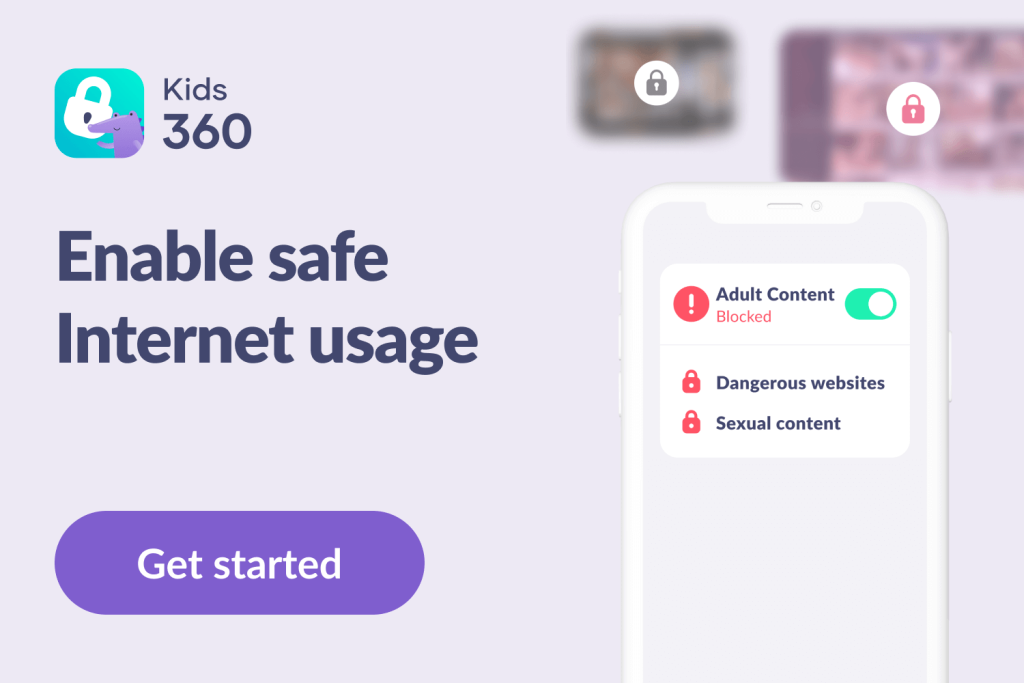What is Mewing: A Parent’s Guide on Teen Gestures and How to Address It

What is mewing? This social media trend involves tongue posture techniques that teens use to influence their facial structure. Why has it become so popular, and what should parents know about it?
Contents:
- What Exactly is Mewing?
- Where Did This Trend Come From and What Do Children Have to Do With It?
- What is the Meaning of Mewing?
- How to Talk to Your Teen About Mewing
- Teaching Your Teens Respect and Self-Love by Addressing Mewing
- FAQs
What Exactly is Mewing?

Credit: dailymail.co.uk
Mewing is a beauty trick popular on social media platforms like TikTok. It was started by an orthodontist named John Mew. The idea is to press your tongue to the roof of your mouth behind your teeth, supposedly reconstructing the shape of your jawline. It is also supposed to help children with their overall posture.
The exercise technique of mewing is about getting rid of a double chin or flattening the skin beneath the chin in an attempt to have a more defined jawline and face features.
Interestingly, teens have found a unique application for mewing. They’ve adopted it to communicate without speaking, meaning to ‘shush’ adults and teachers in their learning environments. So, mewing is not just a beauty trend, but also a new form of teen communication.
Where Did This Trend Come From and What Do Children Have to Do With It?

YanLev Alexey/Shutterstock.com
Mewing is not entirely a new phenomenon. It originated from the world of beauty and health enthusiasts. It’s a method practiced by models for a more defined facial structure.
By maintaining the proper tongue posture—essentially pushing the tongue against the roof of the mouth—they achieved more pronounced cheekbones and jawlines in photos.
Fast-forward to the current trend: Teenagers have adopted and transformed mewing into their own communication language. It isn’t about enhancing their looks anymore. Instead, it’s evolved into a form of nonverbal communication among peers.
This has even spilled over into classroom settings, creating a stir in the education community. Insiders say it’s a way teens dodge answering questions or expressing disinterest. h
So the question arises, why have children adopted this degree of mewing?
@mrferroni I appreciate my students for trying. #mewing ♬ original sound – Nicholas Ferroni
Аccording to teacher and TikTokker Nicholas Ferroni, this behavior is part of the teenage psyche, revolving around exploring trends, being part of social circles, and achieving some level of significance.
By mewing, teens are creating a cryptic lingo less decipherable by adults, establishing a secret layer of communication. This new trend adds to the teen language involving emojis, memes, and acronyms. It’s another meaning of the age-old tale—the youths seeking their own identity, language, and space in the world.
What is the Meaning of Mewing?

BearFotos/Shutterstock.com
Nowadays, mewing isn’t just a beauty trend for a sculpted jawline. Teens are using it as a gesture to show defiance. When they mew, they’re basically shushing their teachers or parents, refusing to join in discussions or school lessons.
It’s a quiet way of showing they don’t respect authority, which can cause tension and make learning tough.
What Does It Mean if Someone is Mewing?
If your teenager is mewing, they are practicing a trend popularized on social media for aesthetic purposes. You’d notice them placing their tongue flat against the roof of their mouth.
However, another interpretation has surfaced. Some teens have weaponized mewing as a method to subtly disrupt communication and avoid engagement, especially in class.
When used in this disruptive way, mewing resembles a shushing gesture and then a sliding movement of their finger along their jawline, signaling that they are mewing and cannot talk. The teen is essentially silencing another person, often in a disrespectful manner.
In order to understand what meaning of mewing your teen is using, it’s important to be aware of these nonverbal cues.
What Does Mewing Mean in Middle School?

Olena Zaskochenko/Shutterstock.com
Kids and students of Generation Alpha in middle school are even catching on to the mewing slang gesture. Keeping their mouth shut and swallowing in hopes of restructuring their jawlines, they will also use this method to remain silent when addressed by peers, teachers, or parents.
The meaning of mewing in middle school remains the same as that of older teenagers—to signal to someone that they will not be answering their question.
Is Mewing Disrespectful?
Mewing originally is not a disrespectful practice. Its inception was to aid individuals in improving their facial posture and definition. Focusing on the positioning of the tongue against the roof of the mouth, mewing is aimed at refining the jawline and promoting better facial posture.
This harmless trend took a problematic turn when adopted by some youngsters as a code signal to shush people, violating the very essence of mewing, which was created to promote health.
The new slang meaning of mewing as a method to avoid participation and silence others has earned it quite a notorious reputation, especially in school environments, as depicted in the public sentiments of teachers and psychologists alike.
Rather than being a helpful gesture associated with health improvement, it has now become a slang symbol for disrespectful and disruptive behavior.
We’ve created an entire section on slang expressions to help parents stay on the same page as their teenagers! Come and explore.
How to Talk to Your Teen About Mewing

DimaBerlin/Shutterstock.com
Approaching your teen about mewing can seem challenging, but it’s essential to have these discussions about slang and trends. Open dialogues promote understanding and respect.
Start by explaining the original intent behind mewing — as a beauty trend meant to define the jawline, not as a power play or a sign of disrespect.
When chatting with your teen, the key is to link mewing with the broader discussion about body positivity and self-esteem. Encourage them to recognize that the perfect body, as projected on social media and a meme, is just an illusion.
Ensure they understand they don’t need to mew to look like the ultra-glamorous models. What matters most is being comfortable in your skin and embracing your unique attributes. They shouldn’t care what others think.
After all, beauty is far more than mere physical appearance; it encompasses characteristics like kindness, empathy, and respect for others.
While mewing in its original context as a beauty treatment is harmless, if used to shush, it’s extremely disrespectful to figures of authority. This behavior can hinder communication and create a false sense of equality.
Explain to your teen that how they treat others goes a long way in shaping their personality and relationships. They have no right to disrespect anyone.
It may be beneficial to mimic the child’s behavior, showcasing the gesture’s impact. This can be a powerful way to elicit empathy, helping them understand the feelings of frustration and disrespect by the mewing trend. Hopefully, this will help your teen change their behavior and become more aware of their actions.
It can also be helpful to stay aware of what content your teens consume online. As a busy parent, the Kids360 app can help oversee what their teens are doing online and set parental controls such as screen time limits to help their teen stay engaged in reality around them rather than sucked into a screen.
Protect your child from the pitfalls of social media trends and slang with the Kids360 app. Monitor their online activity, stay informed about their digital interactions, and ensure their safety in today’s ever-evolving digital landscape!
Teaching Your Teens Respect and Self-Love by Addressing Mewing

Antonio Guillem/Shutterstock.com
Undoubtedly, the trend of ‘mewing’ can be seen as a teachable moment for our teens. It’s crucial to address this behavior respectfully and educate them about how their actions can impact others.
Encourage them to express themselves without causing discomfort to others. Let’s use this to foster a culture of respect and understanding.
Remember, parenting is all about navigating the small challenges that come our way. In doing so, we help our children develop into considerate adults.
After all, social trends may come and go, but good manners and self-respect never go out of style!
If you found the meaning of this slang term helpful, share it with other parents and teens to help them approach the topic.
FAQs
What is mewing in Gen Z slang?
Mewing is a trend among Gen Z that involves adjusting the position of the tongue in the mouth. The idea is that proper tongue posture can influence the shape of the jaw and overall facial structure over time. Teens often share their experiences online, making it a popular topic in social media trends.
Why is Gen Z obsessed with mewing?
Many young people are curious about ways to improve their appearance naturally. Mewing is seen as a simple method that could subtly enhance jawlines and facial definition. Its visibility on platforms like TikTok and Instagram has fueled the fascination.
What is the mewing technique?
The technique involves placing the entire tongue against the roof of the mouth, keeping lips closed, and maintaining good posture. Correct tongue posture is the key principle behind it, though experts say evidence of major changes is limited.
What does shushing with your finger and rubbing your jawline mean?
This gesture is often used in videos showing off jawlines. It’s a playful way for teens to indicate attention to their facial features and subtly reference mewing without saying it outright.
The picture on the front page: CarlosDavid/Shutterstock.com
Проверьте электронный ящик




















